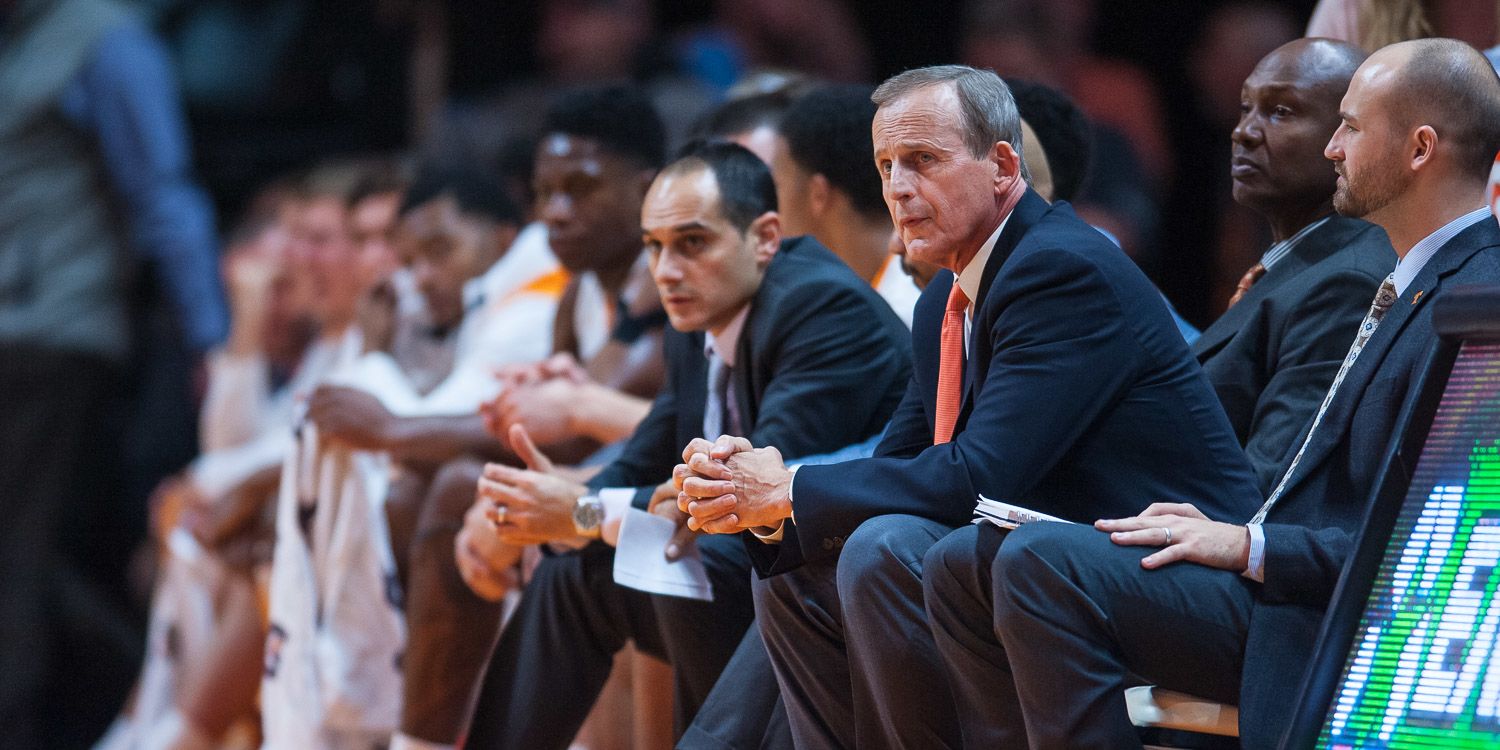The Ringer has a really interesting piece about how while there are very few future NBA players in the Final Four, all four teams are running NBA systems (i.e., spreading the floor with virtually all five players on the court as three-point threats). It speaks to a few things about the future of college basketball (the NBA is already there) in which positional versatility is incredibly valued while at the same time true back to the basket big men are ever rarer. All of these are germane to a discussion about the immediate future of the Tennessee Basketball program:
Should Tennessee Zig While Others Zag?
On the one hand, one could make a strong case that Tennessee’s physicality inside with Grant Williams, Derrick Walker, Admiral Schofield (if the opposing defense puts a smaller defender on him), and potentially even Yves Pons given his physique, is the one competitive advantage the Vols might have against most every opponent regardless of relative talent. And that when the rest of the country is playing small ball, with either UK/Duke/UNC-type NBA talent or not, Tennessee should instead lean on its biggest asset – size and physicality – to win games and go deep into March. A sort of reprise of the Memphis Grizzlies’ Grit n Grind style where the Grizzlies parlayed the size, brute force, and defensive tenacity of Marc Gasol/Zach Randolph/Tony Allen into a stretch of deep playoff runs when everyone else was talking about how floor-bound big men were a thing of the past and the only way to win was to shoot 50 three-pointers a game. That was basically Tennessee’s formula this past season and they won 26 games and an SEC Championship and will return just about all of the talent + experience next season. It would be very fair for Rick Barnes to say let’s do it again, just a little better, right?
Or Should Tennessee Evolve?
On the other hand, the article presents a compelling reason for Tennessee to if not change its philosophy (you can be physical and play great defense no matter what your offensive style is) then at least augment it on the offensive end to get better.
The author states: “The point isn’t that their offenses ensured deep runs in the NCAA tournament. It’s that a more progressive style of play gave them a chance against more talented teams.” No matter who Tennessee adds in the late signing period to fill its (current) one spot on the roster, the Vols will not be among the most talented 15-20 teams in the country based on NBA potential if not also other metrics. However, the team is good enough to likely be at worst a Preseason Top 15 team and a strong contender for yet another very high seed in the NCAA Tournament. Therefore, it would behoove Coach Barnes to both make sure that a worse/less talented team doesn’t use a more optimized offensive strategy to pull an upset while at the same time giving Tennessee its best chance to win against more talented teams. As if to drive home the point for Tennessee, the author very specifically calls out the fact that Tennessee took twice as many long 2s as Loyola did in its one-point 2nd round loss – illustrating that it was offensive philosophy and not talent that won that game for the Sister Jeans.
The article strongly bolsters the case presented here and here that what many of Tennessee’s returning roster – both starters and bench players – can do for their respective games in the offseason is improve their 3-point shooting:
Imagine a team where neither Grant Williams nor Kyle Alexander are solely dependent on post scoring but instead have added respectable and even reliable three-point shooting to their respective repertoires; Jordan Bone is deadeye with an open look that comes from great ball movement from the perimeter as well as inside-out passing; Yves Pons has continued to develop his three point shooting; and both Jalen Johnson and Zach Kent have earned minutes on the defensive end such that their strong shooting is on the floor…and all of these are in combination with the already deadly shooting of Admiral Schofield, Lamonte Turner, and Jordan Bowden. That’s a team that is nearly impossible to defend and can adapt to any kind of defense thrown at it regardless of the relative talent on the floor.
Judgement: Make that Change
The first scenario is interesting, more comfortable, and therefore probably easier to lean on if you’re Rick Barnes. The man has won a ton of games and played in 23 NCAA Tournaments – he’s clearly very good at what he does. However, in the end I think it’s pretty clear that in order for the Vols to take the next step – unless they’re going to start landing one and done type NBA players and can simply outman everyone, which is extremely unlikely – they’re going to have to adapt their offensive scheme to start spacing the floor better and shooting more threes. The good news is twofold: Barnes is both incredibly smart and strategic – witness how he handled this team all season – and he has the players with the potential to do this with some simple offseason skill development that requires neither a full overhaul of the existing roster nor anyone completely retooling their game. It will be fascinating to watch and see what kind of changes Barnes looks to make with his veteran roster so that the Vols are dancing much further into March of 2019 than they were in 2018.
